18 || A fellow wandered who entertains her idle times drawing, talking about folklore, art, and anything related to the Victorian Era. My WIP is "The Night has a thousand eyes" (belonging to The Raven Volumes series). The header was made by the talented @aneurinallday
Don't wanna be here? Send us removal request.
Text

Victoria Peak with my Mamiya RB67
@kevintadge
65 notes
·
View notes
Text

Gioji Temple in Japan with my Mamiya RB67
@kevintadge
2K notes
·
View notes
Text
VICTORIAN NI! 🗣️‼️
Here's a little tease of my fiction "By Friday Life Has Killed Me"
The name was inspired by the lyrics from Morrissey's song 'I have forgiven Jesus', and the characters are a bit of mix by my oc and some of my favourites. 🫶🏻
17 notes
·
View notes
Text
-song that would unironically put someone’s conservative relative into their early grave.

#Sin documentos#Los Secretos#It’s sang in Spanish it means “without documents / undocumented”and *gasps* are those the colours of the trans flag???#(Probably a random choice of colours but it makes it more funny)
0 notes
Text
forgive me but the “gay son or thot daughter” is to me frankly upsetting. You are telling me you are measuring the worth of an hypothetical (yes, hypothetical) child by their future hypothetical sexuality? “I’d rather have a thot daughter because a gay son would be a disgrace” “I’d rather have a gay son because I want my daughter to respect herself” or even “I’d want a thot daughter because it would be so much fun” (real comments) sweats so much homophobia, fragile masculinity and sex negative, purity/rape culture stuff it’s appalling. I don’t know who even created this debate, but I hate it so much.
2 notes
·
View notes
Text
🔸 Mutuals Ask Game 🔸
Rules: send me an emoji and I'll tell you what I associate with you for the given category
🎨 -> for artworks 🎵 -> for music 📚 -> for quotes 🔵 -> for colours
feel free to reblog and/or add categories ✨
40 notes
·
View notes
Text
Hairstyles and hats, ca. 1830: part 1
Another gigantic fashion post today.
Hair, hair, hair. Let’s talk about hair. It’s such an important marker of beauty in any given period, for men as well but especially for women. I always figured this is why historical movies can be so reluctant to portray women in period hairstyles if those hairstyles happen to conflict with modern standards of beauty. I can’t tell you how many times I’ve seen a period flick and been so impressed with the work of the costume designer, only to have their meticulous efforts spoiled by the shoddy hair and makeup design.

^^^Yep, you too, Les Mis movie. What is with this hair??? My modern eyes say, “hey, it’s cute,” and my 1830s eyes say, “wtf is this bedhead? put your hair up, girl!”
This seems to be a thing for actresses more than actors, and I don’t know whether it’s the actresses who demand that they not be “uglied” up, or the director, or the hair designer him/herself, but whoever it is needs to grow up and realize that hot women will still be hot in 1830s sausage curls and apollo knots, and hot men will still be hot in mutton chops and under-the-chin beards. Sorry, /end rant. But really, movie industry, can we get on this?
So, ca. 1830 ladies’ hair. The most stereotypical image of this period’s hairstyles is the ringlets on the sides and the coiffure à la chinoise up the back, garnished with all kinds of wild shit, from real flowers to tortoiseshell combs, from lace veils to ostrich plumes, from strings of pearls to turbans:


Coiffure à la chinoise is a hairstyle accomplished by pulling the majority of the (very long) hair tightly back and twisting it up into huge loops on top of the head. This political cartoon (which I’ll discuss at more length some other time, because it is awesome) shows the scalp-tugging process of hairdressing:

Professional hairdressing was mostly a men’s occupation ca. 1830, though many ladies’ maids were also used to do a lady’s hair on a day-to-day basis. The professional hairdresser would make house-calls for special occasion hairdos, especially for very wealthy clients, but he also worked out of a brick-and-mortar shop. These hairdressing salons, much like those of today, were usually located in fancy shopping districts, especially the upscale shopping galleries like the Galerie Vivienne or the Passage des Panoramas (more on these in a later post–I love 1830s shopping galleries). The professional hairdresser advertised through fashion plates, which often give the name both of the dressmaker and the hairdresser whose fashions are being featured. There are also fashion plates just for hairstyles or hat styles, which show a front and back view for each. The hairdresser’s art was just that: an art. His hairstyles were living works of art, statues sitting on top of a lady’s head, and he could command fees accordingly. He would be employed either by the very wealthy or for special events. Less wealthy women could have their maids do their hair, or else do it themselves.
The typical process of 1830 hairdressing began by parting the hair into three sections: one shorter one on each side of the forehead and one longer one in the back. The hair’s part is sometimes located in the center, sometimes on the side, and sometimes v-shaped, like this:

The side sections are curled into ringlets with curling tongs (or else with curling papers or cloths), while the back section is yanked (painfully) into those loops and braids and pinned into place. Pomade is used to keep the hair on top and in the back smooth and straight and shiny. Lots of fake hair pieces are used, too, since of course not everyone is equally endowed, hair-wise.

^^^Here are some mid-19th century false curls mounted on a ribbon, to be tied on the head.
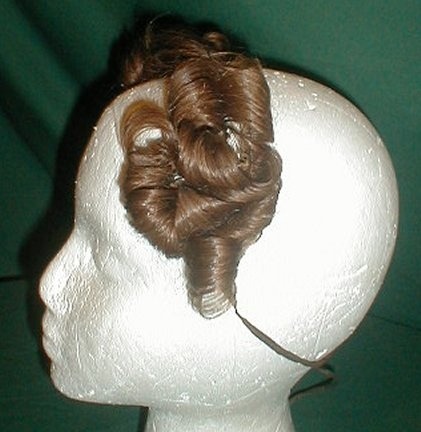



^^^This is another set of ca. 1830 false curls, with its own storage box and all! Of course, when I say “false,” I don’t mean the hair: it’s real human hair. This is the sort of thing that Fantine’s glorious blonde hair would have gone towards making. There are also fake hairpieces for the back of the hair, fake curls, fake loops, fake braids, and so on, but I haven’t yet come across any surviving examples. Female Enjolras would have had to make generous use of these when dressing as a woman, since her hair is cut short for her masculine disguise. (Oh Jesus, let’s not consider the possibility of a side story where female Enjolras ends up unwittingly using hairpieces made from Fantine’s hair…………O__O)

^^^Another late 1830s hairpiece. Most of these fake hairpieces would be intended to be used underneath a morning cap or turban, with just the curls sticking out the front, like so:

This makes it a little easier to see how the fake curls could be tied on with a ribbon or fixed with a net and still not be too obvious.
Back to the coiffure à la chinoise. This style supposedly got its name because 1820s/30s people thought it looked like the traditional hairstyles of Chinese women. (I can kinda see that…..? Though really it looks more like the traditional topknot of Chinese men.) The giant hair loops of the coiffure à la chinoise are sometimes called “apollo knots” as well, though really that applies better to loops like these ladies have, which are imitations of those seen on antique Greek statues of Apollo:

These ladies also have hair pins shaped like a “cupid’s arrow,” which seems to have been a trend at one point:




There are plenty of apollo knots and chinoise hairdos in this period, but really, the hairstyles of the late 1820s/early 1830s are actually quite varied, much more so than I thought before I started researching this stuff. The size and number of the curls, whether they are pinned up on the head or allowed to fall in ringlets alongside the face, or whether there are even curls at all; whether the back of the hair is pulled into loops, swept up in ringlets, braided into a crown shape, and whether it’s decorated with feathers, braids, beads, pearls, hair combs, pins, flowers, veils, ribbons, etc.–all of these points vary widely, sometimes from year to year, but also within each year, according to the individual’s taste.
I’m just going to put up a bunch of hairstyles from between 1825 and 1835, and you can see the wide variety for yourselves:







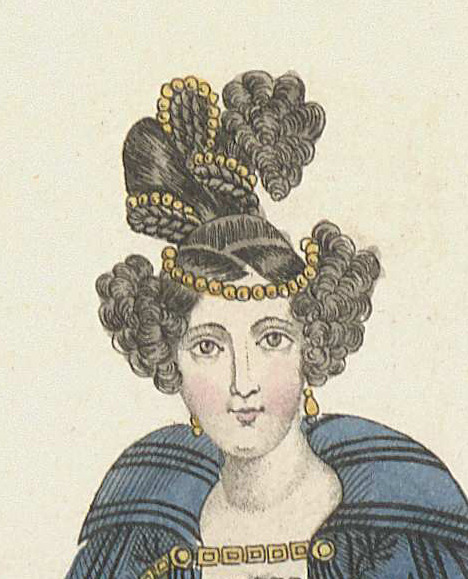



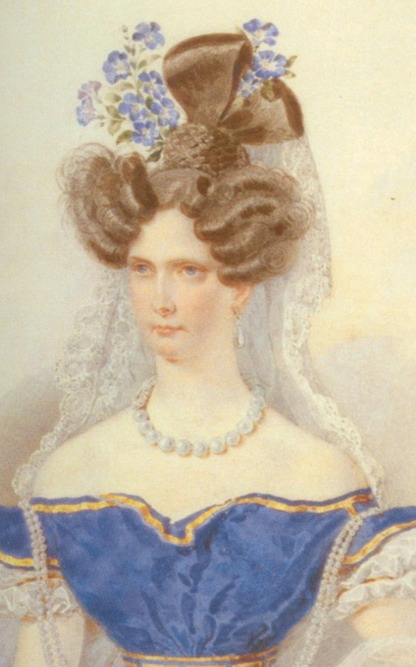








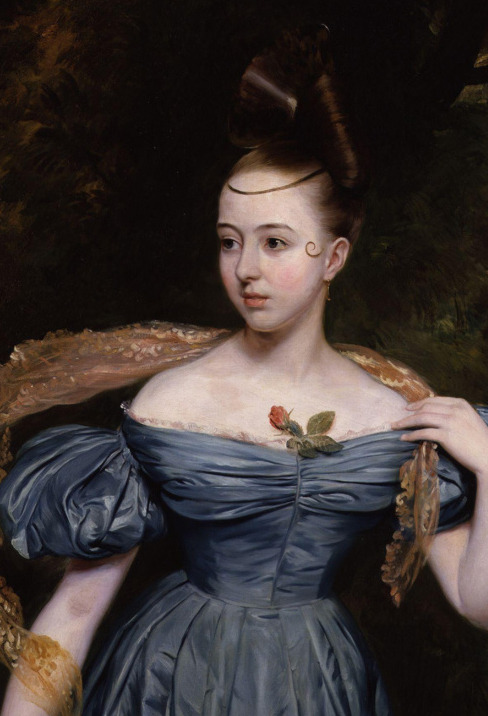





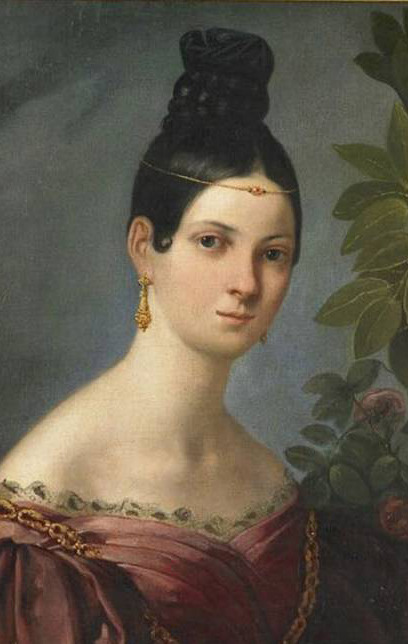


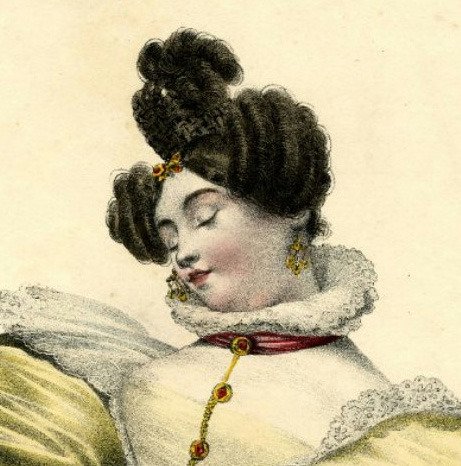



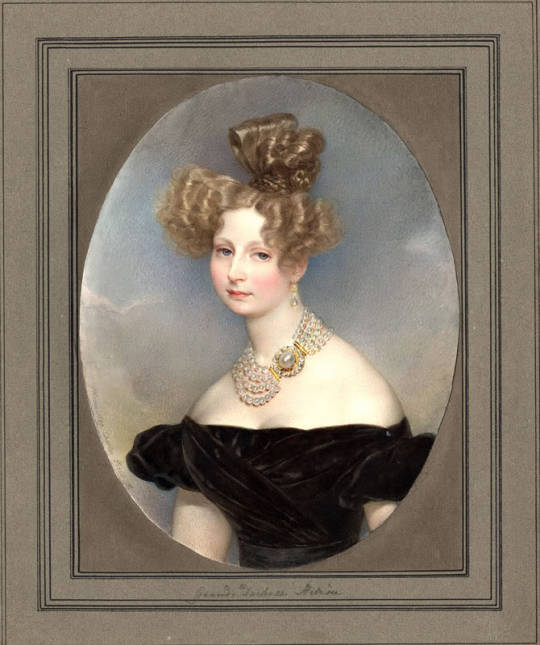










Remember, all of these examples are from 1825-1835. The smoother, sleeker styles generally tend to be towards the end of this period, and the curlier styles towards the beginning of the period, but sleek styles appear in the late ‘20s and curly styles appear into the ‘40s, so it’s hard to generalize. All the beauty in variety!
2K notes
·
View notes
Text
Proposal for new fandom etiquette:
If you read a fic because it was linked/recced somewhere, you leave a comment saying "came from XXX" and that comment doesn't need to include anything else.
Because when all of a sudden there's a lot of activity on one particular fic I WANNA KNOW WHY!!!!!
10K notes
·
View notes
Text
i know the idea of 'hear me out' type posts is weird non-conventional attraction but i also have a fascination for the people whos 'hear me outs' are conventionally attractive characters from the most OBSURE media. like if you were asked to name a sexy character and your first thought is the girl from a mostly forgotten 1980s canadian animated scifi musical im gonna be way more intrigued by whats going on in your brain than if you had said like. the dragon from shrek yknow.
33K notes
·
View notes
Text
If you are like me and you love to read classic literature but you also love holding books in your hands, watch out for Amazon public domain scams. That is, people dump the text of a public domain novel into Amazon's self-publishing platform and then sell it without any editing. Often these copies are horribly formatted and occasionally incomplete or inaccurate and they aren't even cheap! One Shakespeare play I bought accidentally was literally a PDF of a scanned script.
Let me show you how to identify them. On the left, a scam edition, on the right, a proper copy of Pride & Prejudice:

The biggest tip offs that this is a scam is "Independently published" in the product details and no preview of the actual text of the novel:


This isn't a huge problem with popular novels like Pride & Prejudice, there are a lot of real copies from real publishers, but it was a problem when I was trying to buy the works of Elizabeth Gaskell or even the lesser known Shakespeare plays. And don't think Barnes & Nobles or other online booksellers are safe! I found these scam Amazon copies on Indigo as well, they pull them right from Amazon. Also, they are often promoted so they'll be near the top of results.
This is me trying to find a copy of Ruth on Indigo's website. The three top results were all scam copies:


My advice is 1. Go for used if possible (as Gaskell is less popular, I had trouble doing this), 2. Check for publisher names that you know (Penguin, Harper Collins etc.) or 3. Go to a physical bookstore so you can look at the pages yourself
And yes, I know I can read these for free online, I have every Jane Austen novel open at all times on my desktop, but I like having my own paper copies.
126 notes
·
View notes
Text
doubly happy day because first I finally got to hang out with my friend and second I got my C2 <3
4 notes
·
View notes
Text

Marie-Julie Clary, Queen of Naples (1777-1845)
Artist: Robert Lefèvre (French, 1755–1830)
Date: 1807
Medium: Oil on canvas
Collection: Palace of Versailles, Paris, France
July Clary
Marie Julie Clary (26 December 1771 – 7 April 1845), also known as Julie Bonaparte, was Queen of Naples, then of Spain and the Indies, as the wife of Joseph Bonaparte, who was King of Naples from January 1806 to June 1808, and later King of Spain and the Spanish West Indies from 25 June 1808 to June 1813.
5 notes
·
View notes
Text

Joseph Bonaparte
Artist: Luigi Toro (Italian, 1836-1900)
Date: 19th century
Medium: Oil on canvas
Collection: Museo Nazionale di San Martino, Naples, Italy
Joseph Bonaparte, king of Spain and Naples
Joseph Bonaparte (born January 7, 1768, Corte, Corsica-died July 28, 1844, Florence, Tuscany, Italy) was a lawyer, diplomat, soldier, and Napoleon I’s eldest surviving brother, who was successively king of Naples (1806–08) and king of Spain (1808–13).
Like his brothers, Joseph embraced the French republican cause and, with the victory of Corsican patriot Pasquale Paoli, was forced to leave Corsica to seek refuge in France. In 1796 he accompanied Napoleon in the early part of his Italian campaign and had some part in the negotiations with Sardinia that led to the armistice of Cherasco. He then took part in the French expedition for the recovery of Corsica and assisted in the reorganization of the island. He was appointed by the Directory minister to the court of Parma (1797) and then to Rome. Late in 1797 he returned to Paris and became one of the members for Corsica in the Council of Five Hundred.
12 notes
·
View notes
Text
all public transport should be free unconditionally and I'm TIREDDD of pretending this is a radical idea
8K notes
·
View notes
Text
site that you can type in the definition of a word and get the word
site for when you can only remember part of a word/its definition
site that gives you words that rhyme with a word
site that gives you synonyms and antonyms
1M notes
·
View notes


